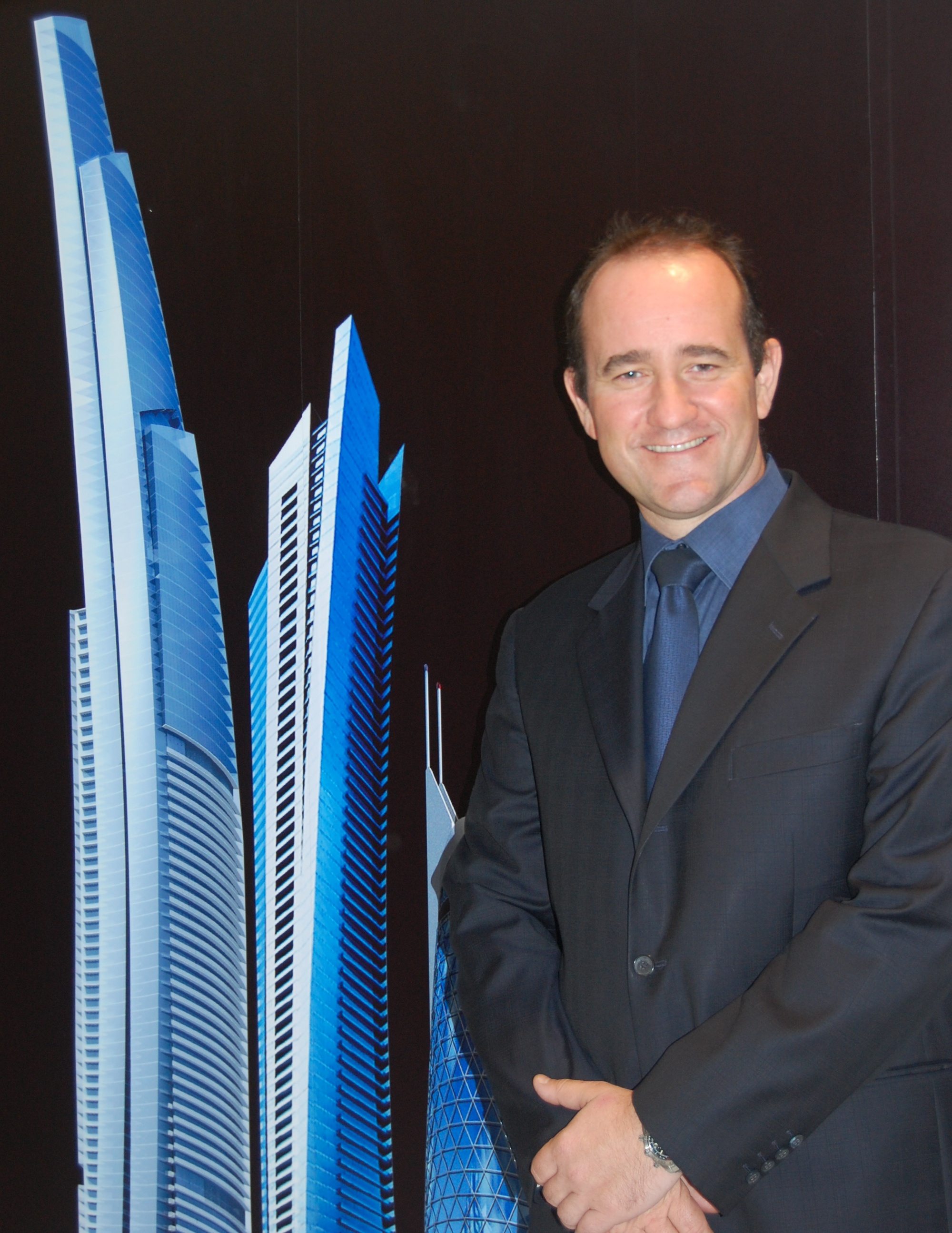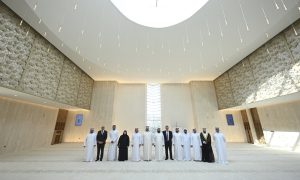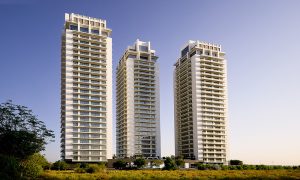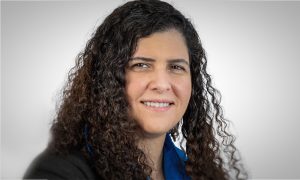Lofty Heights
After a temporary project setback Damac Properties’ Niall McLoughlin, explains why the luxury developer is still one of the top in the industry

With a proven track record for building tall, architecturally impressive buildings Damac Properties’ is adept at protecting high structures from both atmospheric and market elements. So when challenges occurred with the company’s projects in Amman, Jordan, the developer changed contractors and got back on track.
“Every developer will do everything possible to avoid a project being delayed. Delays are costly and time consuming,” says Damac senior vice president Niall McLoughlin.
“The longer a project takes to complete, generally, the less profitable they are, and the more likely it is they’ll incur a loss for the developer.”
As reported in The Big Project last month, Damac recently announced it has awarded the main construction contract for the completion of the Amman, Jordan projects to a joint venture between United Engineering Construction (UNEC) and El Concorde Construction.
All three property units are expected to make an impressive contribution to Damac’s portfolio. The Heights is a luxury 35 storey residential tower positioned beside a piazza; Lofts at the Heights is an executive residence; and the Courtyard, a 9 storey project, is situated at the gateway to Jordan’s Abdali master plan.
“Now that the new main contractor is on site, we expect construction to rapidly progress,” McLoughlin says and he is keen to reassure potential investors the temporary setbacks will have no bearings on the project’s future.
“It is important to point out that projects which have suffered a delay won’t necessarily be plagued by delays,” he explains.
“Customer confidence increases as projects approach completion, which means that a project which is partially completed will always be more appealing to customers than one which is starting from scratch.”
A progressing portfolio
Damac’s signature residential tower, the 84-storey Ocean Heights at Dubai Marina — featuring an artistic twist at a gradient of 33 degrees from the base — was completed earlier this year. Damac is also working on the handover
of two office towers at Business Bay; Business Tower and XL Tower in addition to a the commercial Smart Heights in TECOM.
Construction work on Lago Vista, a tripletower residential development at Dubai’s International Media Production Zone (IMPZ), Emirates Gardens 2 and Tuscan Residence, low rise residential developments in Jumeirah Village, is also in progress.
Some of Damac’s more outstanding structures include the 46 storey Park Towers in the Dubai International Financial Centre – inspired by London’s iconic Gherkin tower – and a yet to be completed 49 storey tower, Al Jawharah on
the Jeddah Corniche in Saudi Arabia, with an external façade creating reflective, light dispersing and refracting panels.
In addition to height and unique design, Damac consider comfort and functionality key factors for a building’s occupants and residents.
For exmaple, Ocean Heights’ twisted exterior provides 75% of its apartments with at least one ocean view; panoramic lifts, similar to those installed at the Burj Al Arab, are a functional yet dynamic design feature of Park Towers.
Easy does it
McLoughlin points out that although tall structures can create spectacular and even overwhelming vistas, the skill of constructing them is remarkably straight forward.
“When it comes to building tall structures, the physical construction of the building is not particularly difficult,” he begins.
“Theoretically, we could keep building floor after floor until we reached the moon. What is challenging about super-tall structures is evaluating and accommodating the impact of elements such as wind, and the force and direction of the winds at higher levels of the structure, and whether they will be likely to cause the building to sway.”
Although weather prediction may not fall within Damac’s expertise the developer has made use of wind technology advancements such as extensive wind tunnel testing and wind impact data on buildings during the design phase to determine the possible impact.
“Wind forces are not only critical at higher levels; they also have the potential to be damaging at the lower levels of a building.
“A super tall structure acts like a wind break, and when wind hits the structure, it’s propelled downwards,” he continues.
“Architects need to consider the downward wind force in their design and in the shape of the building,” he adds.
Another challenge in constructing tall buildings is providing sufficient ways to access all floors, particularly in case of an emergency.
McLoughlin confirms that although elevators are the most logical choice, the space they take up on the floor plate requires a balance to be struck between the height of the building and the footprint of the tower.
Damac enlist the help of an external company to prepare a vertical study, examining the dimensions of the structure and making recommendations on the size, speed and number of elevators needed to service a particular
building.
McLoughlin believes that innovations in elevator technology have been crucial to the tall structure trend, with elevators being programmed to service specific sections of a supertall structure, providing scope to build taller.
Mc Loughlin says: “Not only have elevator manufacturers made significant advancements in terms of speed, but they have also made incredible progress with regard to computer programming and the development of more intelligent lifts.”
Mc Loughlin acknowledges that every tall tower is different with unique design characteristics that require custom technological solutions to service every floor.
“The lighting system implemented in one tower will not easily be transferable to another tower of similar dimensions. The same is true for all electrical, plumbing and elevator systems. In essence, it means there is no such thing as
a standard structure, or a standard system.”
“Buildings are separated into zones, and elevators are programmed such that they only service one particular zone.
This has greatly improved the efficiency of elevators inside tall buildings,” he adds.
Despite the challenges of constructing tall buildings, including government regulations about zoning and design
specifications such as fire escapes, McLoughlin is still keen to promote supertall structures.
“There is a certain prestige associated with tall towers, particularly those distinguished by global design awards.
“Tall towers become impressive and enviable landmarks, and people want to be connected with that stature. An
apartment in a super-tall tower is a highly recognizable status symbol,” he says.
Pinnacle of design
After winning several awards, including best debut stand in 2008 at Kazakhstan’s KazRealty; best high rise development for La Residence at The Lotus; and best website for Damacpropterties.com, the company’s strategy is to continue constructing unique, architecturally impressive towers that not only attract, challenge and inspire their
customers, but also the average person walking down the street.
“We want people to stop, stare and be in awe of every tower that we build, and to achieve that we have to continually challenge ourselves to be more creative in terms of design.”
McLoughlin acknowledges from an architectural perspective, that while steel formwork can offer more scope for creativity, this flexibility is marginal compared to what can now be achieved with concrete.
“In many other countries around the world it is cheaper and faster to build super-tall structures with steel. However, this is not the case in the Middle East,” he says.
McLoughlin also stresses that the use of different materials in the region is practical rather than preferential.
“It is not the case that steel formwork is being shunned in the Middle East; it’s more a matter of developers making construction decisions based on the available resources,” he observes.
“In this region it is simply more time and cost effective to use concrete, given the resource limitations in the market.”
However, with the completion of executive residence Park Towers in Dubai’s International Financial District (DIFC) expected later this year, obstacles are far from McLoughlin’s mind. Speaking of future projects he says: “Damac
Properties is continually investigating and evaluating investment opportunities across the Middle East and beyond.
“We will make announcements on new developments as and when the timing is appropriate. Although I can say that we are very active in pursuing new opportunities for growth, so watch this space.”
























